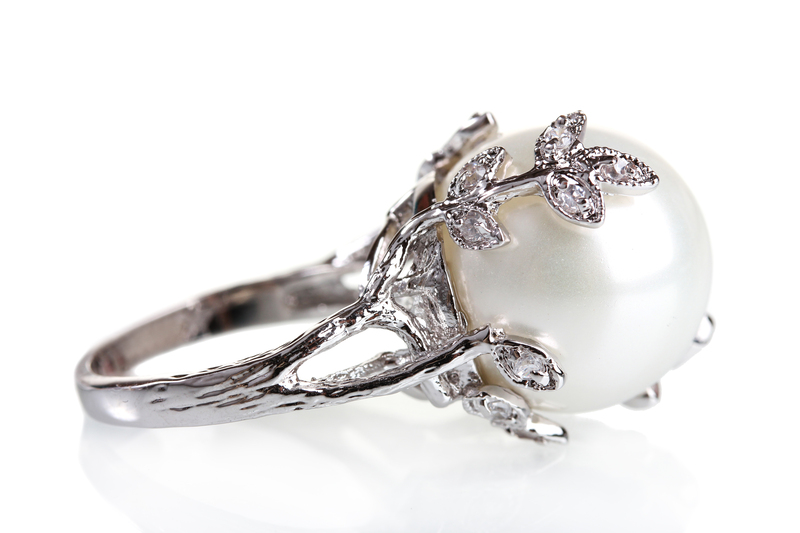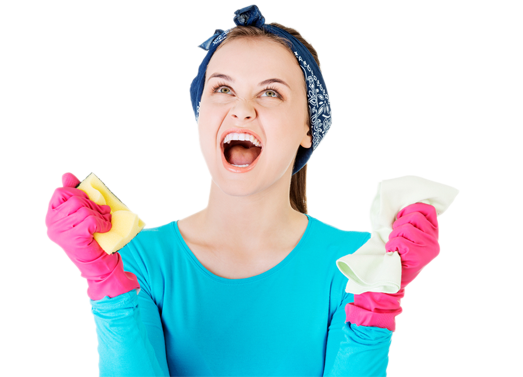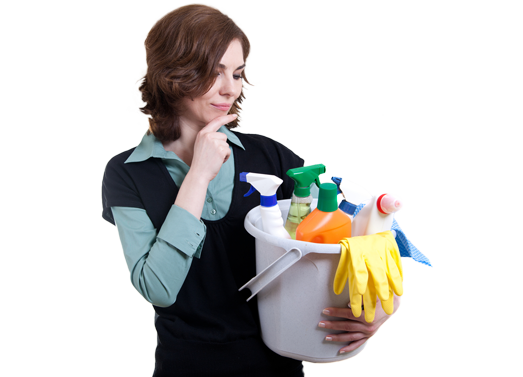Velvet Curtains: A Guide to Safe Cleaning and Longevity
Posted on 02/06/2025
Velvet Curtains: A Guide to Safe Cleaning and Longevity
Velvet curtains are beloved for their luxurious texture, rich appearance, and ability to elevate the aesthetics of any room. While these sumptuous drapes add undeniable elegance, their care and maintenance require special attention. Whether you've just invested in vibrant crushed velvet curtains for your living room or inherited delicate antique velvet window coverings, understanding how to safely clean and preserve them is essential for maintaining their beauty and extending their lifespan.
Understanding Velvet: What Makes It Unique?
Velvet is not just another type of fabric; its plush pile and complex weave give it a distinctive feel and appearance. Velvet drapery is typically made from materials like cotton, silk, polyester, or a blend. The fabric's soft, dense pile is what creates its signature sheen and depth of color. However, this very structure also makes velvet susceptible to crushing, staining, and other forms of damage if not handled properly.
Main Types of Velvet Used in Curtains
- Silk Velvet: Known for unmatched luster and softness, but delicate and expensive.
- Cotton Velvet: Durable, slightly matte, and easier to care for than silk variants.
- Polyester Velvet: Affordable, resilient, and commonly found in modern velvet curtain panels.
- Crushed Velvet: Features an intentionally crumpled texture that adds visual interest and disguises minor marks or creases.
Understanding the specific velvet type helps determine the best curtain cleaning techniques and maintenance schedule.

Why Velvet Curtains Require Special Cleaning
Velvet fabric curtains are more vulnerable to water marks, pile damage, and color fading than flat-weave or synthetic drapes. Common cleaning mistakes can lessen their lifespan or permanently alter their appearance. By learning how to clean velvet curtains safely, you avoid costly accidents and keep your drapes looking opulent for years.
Potential Damages from Improper Care
- Pile crushing: Flattens the signature raised fibers, leading to dull and uneven surfaces.
- Water stains: Spots or rings may form if moisture is left to dry naturally.
- Color bleeding: Incorrect cleaning solutions or excess water can cause the dye to run.
- Shrinkage: Not all velvet is pre-shrunk--improper washing can alter the fit.
It's clear that regular curtain maintenance and safe cleaning practices are crucial for preserving velvet drapes.
Routine Maintenance: Keeping Velvet Curtains Fresh
The Importance of Gentle, Frequent Care
Regular attention helps prevent dust buildup, allergens, and fabric wear. The best way to prolong the life of your velvet window coverings is through simple, gentle maintenance:
- Vacuuming: Use a handheld or upholstery vacuum with a brush attachment set to low suction. Always move the nozzle in the direction of the pile.
- Brushing: A soft clothing brush helps lift lint and keeps the nap fluffy.
- Daily shake: Giving your custom velvet curtains a gentle shake removes loose dust and prevents deep-set dirt.
- Shield from sunlight: Prolonged exposure can fade vibrant hues; use sheer blinds or rotate the curtains regularly.
Tip: Try incorporating these steps into your weekly cleaning routine for effortless velvet drapery care.
How to Clean Velvet Curtains Safely: Step-by-Step Guide
When to Opt for Professional vs. At-Home Cleaning
Most velvet curtain manufacturers recommend dry cleaning, especially for curtains made with silk or with lining. However, sturdy cotton or polyester velvet drapes may be suitable for cautious home cleaning. Always check the care label before proceeding.
Spot Cleaning Velvet Curtains
- Test First: Try your cleaning method on an inconspicuous area to ensure no adverse effects.
- Blot Spills Immediately: Use a clean, white cloth to gently blot (not rub) liquid spills. Avoid pressing too hard.
- Use Mild Solutions: Mix a small amount of gentle dish soap with cool water. Dip a soft cloth in the solution, wring almost dry, and dab at the stain.
- Rinse: Wipe the area with a damp cloth (water only) to remove any soap residue.
- Dry Properly: Use a hair dryer on a cool, low setting or a fan to help dry the cleaned area. Brush the pile gently once dry.
Hand Washing Cotton or Polyester Velvet Curtains
- Remove the curtains and shake outside to dislodge dust.
- Fill a modern bathtub or large basin with cool to lukewarm water. Add a small amount of gentle detergent.
- Slide the curtains in gently and move them through the water with your hands. Never wring or twist.
- Rinse thoroughly in cool water until all detergent is gone.
- To remove excess water, lightly press between clean towels--not by wringing.
- Hang to dry on a wide rod or drying rack, making sure nothing pinches or creases the fabric. Keep them out of direct sunlight.
- Once dry, use a soft brush or a handheld steamer to restore the pile.
Note: Hand washing is only recommended for robust, unlined velvet curtains. Always err on the side of caution with precious or antique velvet.
Steam Cleaning Velvet Drapes
Steam cleaning is a safe way to refresh velvet without immersing it in water:
- Use a handheld steamer, holding it a few inches away from the fabric to prevent water spots.
- Work in the direction of the nap; avoid soaking the fabric.
- After steaming, brush gently to revive the texture.
This technique is perfect for removing wrinkles, odors, and mild dirt from luxury velvet drapes.
Dry Cleaning: The Gold Standard for Velvet Curtain Longevity
Professional curtain dry cleaning is recommended for silk velvet, lined panels, or when your curtains have extensive stains and need a thorough refresh. Dry cleaners have the right chemicals, tools, and know-how to treat delicate velvet without risking shrinkage, pile damage, or color bleed.
Before bringing your curtains in, inform your cleaner about the fabric content, lining, and any specific stains or concerns. They can tailor their process accordingly for maximum protection.
Ironing & De-Wrinkling Velvet Curtains
Avoid ironing velvet directly. The heat and pressure can crush its pile and leave imprints. If you must remove creases:
- Hang the curtains in a steamy bathroom and let gravity help smooth the wrinkles.
- Use a handheld steamer, as described above, for safe and effective results.
- If you need to touch up a stubborn area, place a clean towel/napping cloth on top and use a low iron, never letting the iron contact the velvet directly.
Tips for Extending the Life of Velvet Curtains
Simple Strategies for Long-Lasting Luxury
- Rotate curtains: Move panels occasionally to ensure even fading/exposure.
- Use lining: If purchasing new luxury velvet curtains, consider lined options for added protection from sun and dust.
- Handle with clean hands: Natural oils from skin transfer quickly to velvet.
- Avoid strong cleaners: Bleach, ammonia, or strong detergents can damage both the pile and dye.
- Store with care: When not in use, roll velvet and store in a cool, dry place. Folding can cause permanent creases.
Common Velvet Curtain Care Questions Answered (FAQ)
Can all velvet curtains be washed at home?
Not all velvet curtains are suitable for home washing. Always consult the care label. Silk or lined velvet drapes should be professionally cleaned. Cotton or polyester velvet may be hand washed with caution.
How do I remove wrinkles from velvet drapery?
Hang curtains so gravity can assist in reducing creases, use a handheld steamer, or hang in a steamy bathroom. Never iron directly unless you use protective layers.
Is it safe to vacuum velvet fabric curtains?
Yes, with a soft brush attachment, low suction, and all movements following the fabric's nap direction. Regular vacuuming keeps plush velvet drapes looking fresh.
What should I do if my velvet curtains get wet?
Gently blot excess moisture; don't rub. Allow to air dry in a well-ventilated area away from sunlight or heat sources, then brush the pile back into place. If water marks appear, consult a professional.

Choosing the Right Velvet Curtains for Your Home
What to Look for in High-Quality Velvet Drapes
- Fabric content: Understand the pros and cons of silk, cotton, and polyester velvets.
- Backing: Lined curtains offer better insulation and protection.
- Pile density: Denser piles often wear better and feel more luxurious.
- Weight: Heavier velvets usually mean higher quality but may require sturdy rods and hardware.
- Care instructions: Review before purchasing to ensure you can meet maintenance requirements.
Conclusion: Investing in the Longevity of Your Velvet Curtains
Velvet curtains are more than just window treatments--they're statements of style and comfort in your living space. With a mindful cleaning approach and regular maintenance, your thick velvet drapes, crushed velvet window coverings, or plush velvet curtain panels will remain a centerpiece of your home's design for many years. Avoid water damage, be gentle with every touch, and always follow the best cleaning practices for your specific velvet type.
From vacuuming and spot-treating to professional curtain cleaning, caring for velvet fabric curtains is straightforward when you know what to do. Treat them carefully, and you'll enjoy their rich texture, luxurious look, and practical benefits--like insulation and sound absorption--far into the future.
Ready to transform your interiors with velvet drapery? With proper attention and care, your investment will deliver beauty, warmth, and sophistication that stands the test of time.




